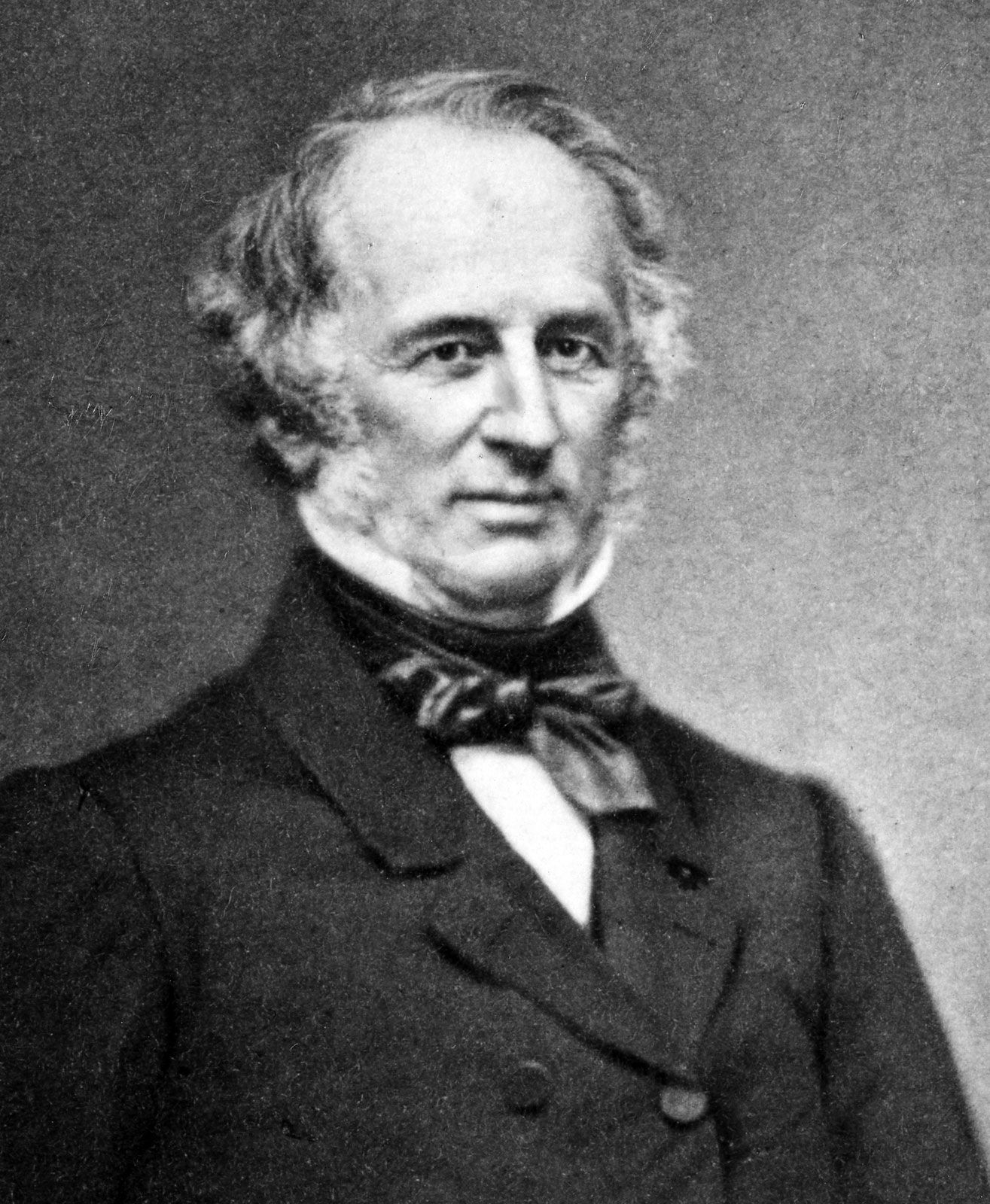The Vanderbilt Family stands as one of the most iconic and influential dynasties in the history of the United States, synonymous with immense wealth, ambitious entrepreneurship, and significant philanthropic endeavors. Emerging from humble beginnings, the family’s ascent to prominence began with Cornelius Vanderbilt (1794–1877), and was solidified by his son, William Henry Vanderbilt. The third generation, led by William Henry’s sons—Cornelius II (1843–99), William Kissam Vanderbilt (1849–1920), and George Washington Vanderbilt II (1862–1914)—further expanded the family’s empire and diversified their interests, leaving an indelible mark on American society.
 William Henry Vanderbilt
William Henry Vanderbilt
William Henry Vanderbilt, son of the family patriarch Cornelius Vanderbilt, played a crucial role in consolidating and expanding the family’s vast railroad holdings.
Cornelius Vanderbilt II, the eldest son of William Henry, demonstrated the most profound dedication to the family’s extensive business and investment portfolios. Upon his father’s passing in 1885, he assumed leadership of the Vanderbilt enterprise, overseeing a vast network of railroads and diverse corporate interests. Beyond his business acumen, Cornelius II was a notable philanthropist, channeling substantial portions of the Vanderbilt fortune into societal betterment. He actively participated in numerous civic and social boards, directing considerable financial resources towards esteemed institutions such as Yale University, Columbia University’s College of Physicians and Surgeons, and the Metropolitan Museum of Art, among numerous other educational, charitable, and religious organizations. His leadership not only sustained the family’s economic power but also cultivated a legacy of civic engagement and philanthropic responsibility.
 William Henry Vanderbilt
William Henry Vanderbilt
Cornelius Vanderbilt II, grandson of the original Commodore, dedicated himself to expanding the family business interests and becoming a significant philanthropist.
William Kissam Vanderbilt, while also involved in managing the Vanderbilt family’s investments and business ventures alongside his brother Cornelius II, displayed a comparatively lesser passion for the intricacies of business management. While contributing to the family’s financial enterprises, William Kissam’s interests leaned more towards philanthropic pursuits, social engagements, and sporting activities. Illustrative of this shift, in 1903, he transitioned the direct management of the Vanderbilt railroads to an external firm, redirecting his focus and energy towards personal passions. He became deeply involved with the Metropolitan Opera, contributing significantly to its operation and cultural impact. An avid art collector, William Kissam also distinguished himself in yacht racing, famously defending the America’s Cup for the United States in 1895 while at the helm of Defender.
George Washington Vanderbilt II, the youngest of William Henry’s sons, pursued paths diverging further from the family’s core business and investment activities. His lasting contribution lies in the creation of the Biltmore Estate, a sprawling and magnificent property near Asheville, North Carolina. Biltmore became the canvas for his deep interest in scientific agriculture and land management. There, he conducted extensive experiments in scientific farming methodologies, advanced stock breeding techniques, and pioneering forestry practices. Despite his lesser involvement in traditional Vanderbilt businesses, George Washington Vanderbilt II continued the family’s philanthropic tradition, making substantial donations to the New York Public Library, Columbia University, and the American Fine Arts Society, thereby extending the Vanderbilt legacy into cultural and intellectual spheres.
The fourth generation of Vanderbilts continued to diversify the family’s talents and interests. Cornelius III (1873–1942), son of Cornelius II, followed a path in finance, maintaining the family’s connection to the financial world. His brothers, Alfred Gwynne Vanderbilt (1877–1915) and Reginald Claypoole Vanderbilt (1880–1925), gained recognition for their prominent involvement with show horses, reflecting a shift towards equestrian pursuits. William Kissam Vanderbilt’s lineage included two sons, William Kissam Vanderbilt II (1878–1944) and Harold Stirling Vanderbilt (1884–1970), both of whom maintained ties to the New York Central Railroad, a cornerstone of the Vanderbilt empire. Harold Stirling Vanderbilt further distinguished himself not only through his railroad affiliations but also as the inventor of contract bridge, a globally popular card game, and as a celebrated yachtsman, securing three victories in the America’s Cup.
Cornelius Vanderbilt IV (1898–1974), son of Cornelius III, carved a niche for himself as a writer and entrepreneur, founding a chain of newspapers. His career marked a further departure from the traditional Vanderbilt business focus, highlighting the family’s adaptability and diverse contributions across generations.
The Vanderbilt family’s story encapsulates the rise of American industrial wealth and its subsequent influence on society, culture, and philanthropy. From their foundational roots in shipping and railroads to their diversified interests in later generations, the Vanderbilts remain a significant chapter in American history, their name still resonating with connotations of both immense fortune and impactful contributions to the nation.
